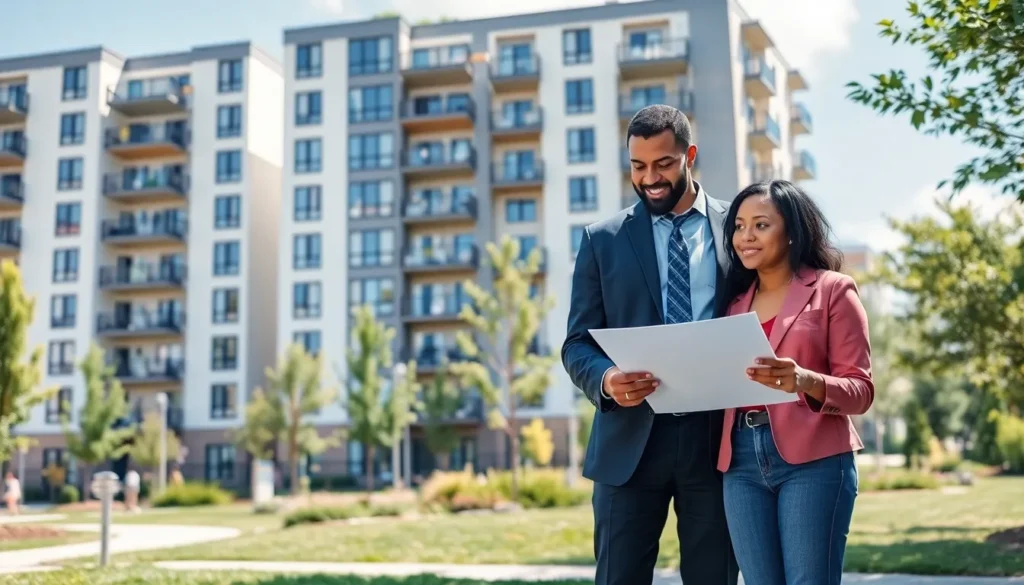Everyone’s heard the term ‘affordable housing,’ but what does it actually mean? Is it a fancy way of saying “cheap apartments”? Not quite. Affordable housing is more than just a buzzword, it’s a crucial part of our urban landscapes. In this text, we’ll break down the nitty-gritty of affordable housing, discuss its importance, highlight some challenges, and explore innovative solutions paving the way for a more inclusive future. Ready to investigate into this essential subject that affects so many lives? Let’s immerse.
Table of Contents
ToggleUnderstanding Affordable Housing

Affordable housing refers to housing units that are affordable to those with a median household income. Simply put, it means that a household should not spend more than 30% of its total income on housing costs. This concept aims to ensure that individuals and families can live without sacrificing their ability to pay for other basic needs like food, healthcare, or education.
In various contexts, this definition can take multiple forms. It could mean rental homes, homes for sale, or both. Generally, affordable housing is crucial for fostering stable communities and addressing social inequality. It’s not just about the physical structure: it encompasses access to essential services like transportation, schools, and healthcare.
Key Characteristics of Affordable Housing
When discussing affordable housing, several key characteristics come to the forefront. First is the price point: affordable housing must be attainable for low to moderate-income families. This often translates to rent that is lower than market rates or homes priced within reach of the average wage earner.
Another characteristic is the safety and quality of the housing. Achieving affordability should never come at the cost of basic living conditions. Safe living spaces involve not only structural integrity but also access to utilities and community services.
Also, affordable housing should ideally encourage a sense of community and belonging. This means creating neighborhoods where people can thrive and connect with one another.
Importance of Affordable Housing
The significance of affordable housing cannot be overstated. It serves as a foundation for economic stability and growth. When individuals and families have access to affordable homes, they can increase their disposable income, spend on local businesses, and contribute to their communities.
Also, affordable housing plays a crucial role in public health. Stable housing conditions can lead to better health outcomes by reducing exposure to hazardous living environments and providing a secure base for stress management. Individuals with stable housing are generally healthier and more productive.
Besides, affordable housing is central to combating homelessness. As communities strive to find solutions to this ever-growing crisis, the need for secure, affordable options becomes even more evident. It helps prevent families from falling into precarious situations while offering opportunities for upward mobility.
Challenges in Affordable Housing
While the need for affordable housing is clear, significant challenges often hinder its availability. One major obstacle is funding. Many programs aimed at creating affordable units depend on government grants, subsidies, or public-private partnerships. When budgets tighten, these crucial programs often face cuts.
Another challenge involves zoning laws and regulations. Many cities have restrictive zoning policies that make it difficult to build new affordable units. These regulations often prioritize single-family homes over multi-family developments, limiting options available for those seeking affordable living.
Also, there’s the issue of gentrification. As neighborhoods become more desirable, property values rise, leading to the displacement of low-income residents. This ongoing challenge adds urgency to the call for affordable housing solutions.
Global Perspectives on Affordable Housing
The conversation around affordable housing is not confined to the United States. Across the globe, various countries face their own housing crises, emphasizing the need for collective understanding and solutions. For instance, in Europe, cities like Berlin and Amsterdam are witnessing skyrocketing rents, prompting governments to impose rent controls and encourage co-housing initiatives.
In Canada, community land trusts and non-profit housing organizations are gaining traction as solutions to the housing dilemma, offering a model that keeps homes affordable by removing land costs from the market.
Emerging economies face their unique set of challenges as well. In nations where rapid urbanization is taking place, the demand for housing often outstrips supply. Innovative low-cost housing projects aimed at providing shelter for the masses are being developed in places like India and Brazil, showcasing the diverse approaches to this global issue.
Solutions and Innovations in Affordable Housing
To tackle the challenges of affordable housing, various innovative solutions are emerging. One promising approach is the use of modular housing, which allows for quicker and cheaper construction without compromising quality. These units can be assembled off-site and then transported to locations where they are needed.
Another innovation is the increasing focus on mixed-income developments. This model not only increases the number of affordable units but also fosters diverse communities. Mixed developments can revitalize neighborhoods and allow people of different income levels to coexist and collaborate.
Also, the rise of sustainable building practices has led to the development of eco-friendly affordable housing. These homes use energy-efficient designs and materials that lower operational costs for tenants, making them even more financially accessible.





